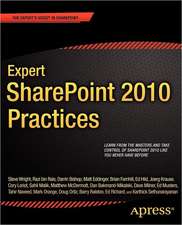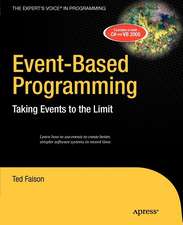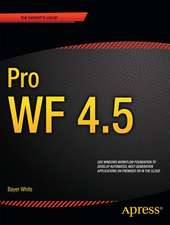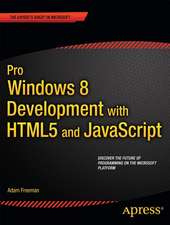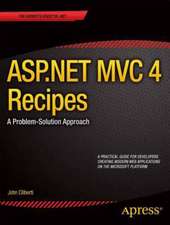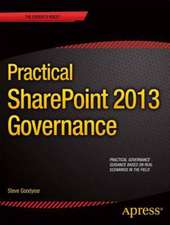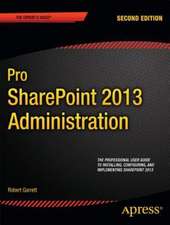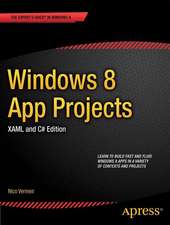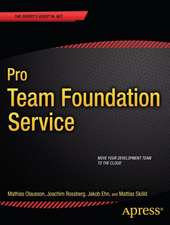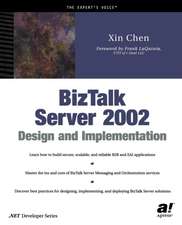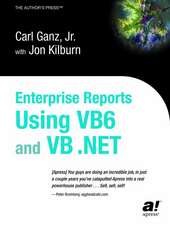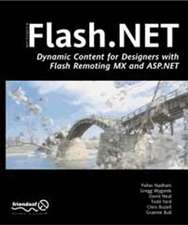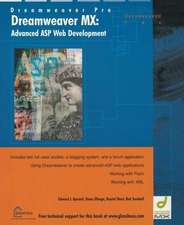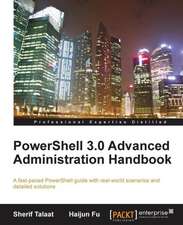Deep Learning on Windows: Building Deep Learning Computer Vision Systems on Microsoft Windows
Autor Thimira Amaratungaen Limba Engleză Paperback – 16 dec 2020
Moving forward, you will build a deep learning model and understand the internal-workings of a convolutional neural network on Windows. Further, you will go through different ways to visualize the internal-workings of deep learning models along with an understanding of transfer learning where you will learn how to build model architecture and use data augmentations. Next, you will manage and train deep learning models on Windows before deploying your application as a web application. You’ll also do some simple image processing and work with computer vision options that will help you build various applications with deep learning. Finally, you will use generative adversarial networks along with reinforcement learning. After reading Deep Learning on Windows, you will be able to design deep learning models and web applications on the Windows operating system.
What You Will Learn
- Understand the basics of Deep Learning and its history Get Deep Learning tools working on Microsoft Windows
- Understand the internal-workings of Deep Learning models by using model visualization techniques, such as the built-in plot_model function of Keras and third-party visualization tools
- Understand Transfer Learning and how to utilize it to tackle small datasets
- Build robust training scripts to handle long-running training jobs
- Convert your Deep Learning model into a web application
- Generate handwritten digits and human faces with DCGAN (Deep Convolutional Generative Adversarial Network)
- Understand the basics of Reinforcement Learning
AI developers and enthusiasts wanting to work on the Windows platform.
Preț: 287.81 lei
Preț vechi: 359.75 lei
-20% Nou
Puncte Express: 432
Preț estimativ în valută:
55.08€ • 59.81$ • 46.27£
55.08€ • 59.81$ • 46.27£
Carte disponibilă
Livrare economică 01-15 aprilie
Preluare comenzi: 021 569.72.76
Specificații
ISBN-13: 9781484264300
ISBN-10: 1484264304
Pagini: 338
Ilustrații: XVIII, 338 p. 188 illus., 7 illus. in color.
Dimensiuni: 178 x 254 mm
Greutate: 0.62 kg
Ediția:1st ed.
Editura: Apress
Colecția Apress
Locul publicării:Berkeley, CA, United States
ISBN-10: 1484264304
Pagini: 338
Ilustrații: XVIII, 338 p. 188 illus., 7 illus. in color.
Dimensiuni: 178 x 254 mm
Greutate: 0.62 kg
Ediția:1st ed.
Editura: Apress
Colecția Apress
Locul publicării:Berkeley, CA, United States
Cuprins
Chapter 1: What is Deep Learning.- Chapter 2: Where to Start Your Deep Learning.- Chapter 3: Setting Up Your Tools.- Chapter 4: Building Your First Deep Learning Model.- Chapter 5: Understanding What We Built.- Chapter 6: Visualizing Models.- Chapter 7: Transfer Learning.- Chapter 8: Starting, Stopping and Resuming Learning.- Chapter 9: Deploying Your Model as a Web Application.- Chapter 10: Having Fun with Computer Vision.- Chapter 11: Introduction to Generative Adversarial Networks.- Chapter 12: Basics of Reinforcement Learning.- Appendix 1: A History Lesson – Milestones of Deep Learning.- Appendix 2: Optional Setup Steps.
Notă biografică
Thimira Amaratunga is an Inventor, a Senior Software Architect at Pearson PLC Sri Lanka with over 12 years of industry experience, and a researcher in AI, Machine Learning, and Deep Learning in Education and Computer Vision domains.
Thimira holds a Master of Science in Computer Science with a Bachelor's degree in Information Technology from the University of Colombo, Sri Lanka. He has filed three patents to date, in the fields of dynamic neural networks and semantics for online learning platforms. Before this, Thimira has published two books on deep learning – ‘Build Deeper: The Deep Learning Beginners’ Guide’ and ‘Build Deeper: The Path to Deep Learning’.
Thimira is also the author of Codes of Interest (www.codesofinterest.com), a portal for deep learning and computer vision knowledge, covering everything from concepts to step-by-step tutorials.
LinkedIn: www.linkedin.com/in/thimira-amaratunga
Thimira holds a Master of Science in Computer Science with a Bachelor's degree in Information Technology from the University of Colombo, Sri Lanka. He has filed three patents to date, in the fields of dynamic neural networks and semantics for online learning platforms. Before this, Thimira has published two books on deep learning – ‘Build Deeper: The Deep Learning Beginners’ Guide’ and ‘Build Deeper: The Path to Deep Learning’.
Thimira is also the author of Codes of Interest (www.codesofinterest.com), a portal for deep learning and computer vision knowledge, covering everything from concepts to step-by-step tutorials.
LinkedIn: www.linkedin.com/in/thimira-amaratunga
Textul de pe ultima copertă
Build deep learning and computer vision systems using Python, TensorFlow, Keras, OpenCV, and more, right within the familiar environment of Microsoft Windows. The book starts with an introduction to tools for deep learning and computer vision tasks followed by instructions to install, configure, and troubleshoot them. Here, you will learn how Python can help you build deep learning models on Windows.
Moving forward, you will build a deep learning model and understand the internal-workings of a convolutional neural network on Windows. Further, you will go through different ways to visualize the internal-workings of deep learning models along with an understanding of transfer learning where you will learn how to build model architecture and use data augmentations. Next, you will manage and train deep learning models on Windows before deploying your application as a web application. You’ll also do some simple image processing and work with computer vision options that will help you build various applications with deep learning. Finally, you will use generative adversarial networks along with reinforcement learning. After reading Deep Learning on Windows, you will be able to design deep learning models and web applications on the Windows operating system.
You will:
Moving forward, you will build a deep learning model and understand the internal-workings of a convolutional neural network on Windows. Further, you will go through different ways to visualize the internal-workings of deep learning models along with an understanding of transfer learning where you will learn how to build model architecture and use data augmentations. Next, you will manage and train deep learning models on Windows before deploying your application as a web application. You’ll also do some simple image processing and work with computer vision options that will help you build various applications with deep learning. Finally, you will use generative adversarial networks along with reinforcement learning. After reading Deep Learning on Windows, you will be able to design deep learning models and web applications on the Windows operating system.
You will:
- Understand the basics of Deep Learning and its history
- Get Deep Learning tools working on Microsoft Windows
- Understand the internal-workings of Deep Learning models by using model visualization techniques, such as the built-in plot_model function of Keras and third-party visualization tools
- Understand Transfer Learning and how to utilize it to tackle small datasets
- Build robust training scripts to handle long-running training jobs
- Convert your Deep Learning model into a web application
- Generate handwritten digits and human faces with DCGAN (Deep Convolutional Generative Adversarial Network)
- Understand the basics of Reinforcement Learning
Caracteristici
Covers deep learning web application design and development Discusses Python, Dlib, Anaconda, and TensorFlow to implement deep learning on Windows Contains real-time deep learning object identification

